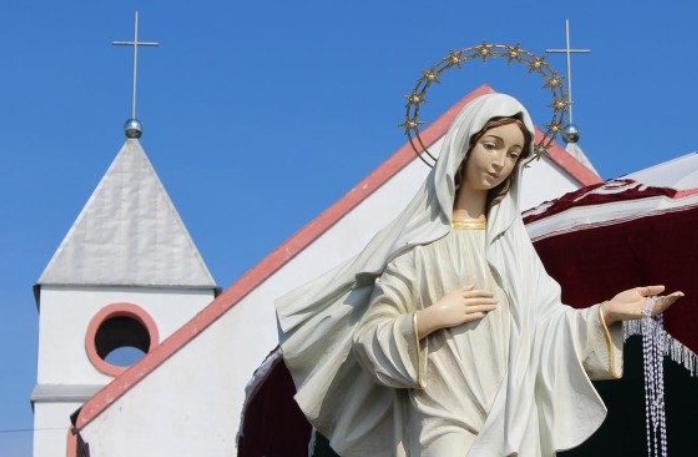Ozernoe, the Marian shrine of Poles deported in Kazakistan
Since 1936, when the Stalinist constitution proclaiming ‘democratic freedoms’ was approved, tens of thousands were relocated from the Ukrainian regions of Vinnitsa, Žitomir, Kiev and Kirovograd to the kolkhoz Avangard in the middle of the steppe. Where, in the name of a modern fish miracle, the Queen of Peace, patroness of Kazakhstan, is worshipped today.
Astana (AsiaNews) - In the village of Ozernoe in northern Kazakhstan, between the cities of Petropavlovsk and Kokšetau, groups of Poles had settled about 90 years ago, deported to the middle of the steppe from the now Soviet Ukraine.
The first big wave dates back to 1936, when the Stalinist constitution proclaiming "democratic freedoms" was approved, while terror, repression and deportations were raging. On April 28 of that year, 35,280 Poles were gathered from the regions of Vinnitsa, Zhitomir, Kiev and Kirovograd, and another 60,000 arrived in 1940-41 from the territories occupied by the Red Army.
In Ozernoe, the Avangard kolkhoz was opened to harvest grain, but after the end of the USSR, agricultural activities stopped, most of the inhabitants tried to leave for better places, and those who could returned to Poland, where their ancestors came from.
And yet, there is still life in the dying village of the northern steppe, because Ozernoe has become the main place of pilgrimage for Catholics from Kazakhstan, and even people from Poland come here. According to local legend, when in 1941 the deported Poles were dying of hunger and thirst, a lake of spring water suddenly formed near the village, where fish were splashing around. The starving were saved, and the lake disappeared after some time.
The local Catholic believers immediately thought of a miracle of the Virgin Mary, who heard their prayers. The site of the saving basin was named Mariamkol, where now stands a tall statue of the Madonna erected in 1997, blessed by the saintly Pope John Paul II before being sent to the site. Already in the early 1990s a small church had been erected, later replaced by a rather large sanctuary, where solemn liturgies are celebrated with a large influx of pilgrims. In 2013 the altar “Star of Kazakhstan” was consecrated with a bold futuristic design and ornaments of Kazakh tradition, to express the relationship of the Catholic world with the country that welcomed them in such dramatic circumstances.
Since 2011 the parish of Ozernoe has officially become the national sanctuary of Our Lady Queen of Peace, protector of Kazakhstan. Every year thousands of faithful from all over the country and abroad go there, reviving the small village of the deportees, where some of their descendants still live, who now have no intention of emigrating. A three-story hotel has also been built in the village, which is not always enough to accommodate all the visitors. In recent days, a group of volunteers from Poland arrived to tidy up the local cemetery, where many of the Catholic “martyrs” of Kazakhstan are buried, often suffocated by the tall grasses of the steppe.
The older ones remember the stories of their parents, uncles and grandparents well, and are somewhat shy about sharing them with the many visitors, including journalists and the curious. The regime of deportation and “limitations on people of Polish nationality” in these places was cancelled only in 1956, after Stalin’s death, and rehabilitation began towards the end of the USSR, with a decree by President Mikhail Gorbachev for the “recognition of the rights of the victims of political repression in the 1920s and 1950s”. The exact numbers of those deported are not easy to establish, between 100 and 250 thousand people; in 1959, 53,000 Poles officially lived in Kazakhstan, and there are currently 32,000 who maintain their ethnicity on their documents, mostly in the northern regions of the country.
As Ivan, an 80-year-old Pole who has always lived in Ozernoe, told reporters, “I wouldn’t have known what to do in Poland, I went there once and I didn’t like it… here are all the people I love, at least those who haven’t left.” Ivan still works in the fields, and when asked if he doesn’t feel tired, he replies: “How can you be tired, in a place where you can constantly talk to Jesus and his holy Mother, and moreover in your native Polish?”.
Photo: Catholic Information Centre of Central Asia/VaticanNews
11/08/2017 20:05







.png)










